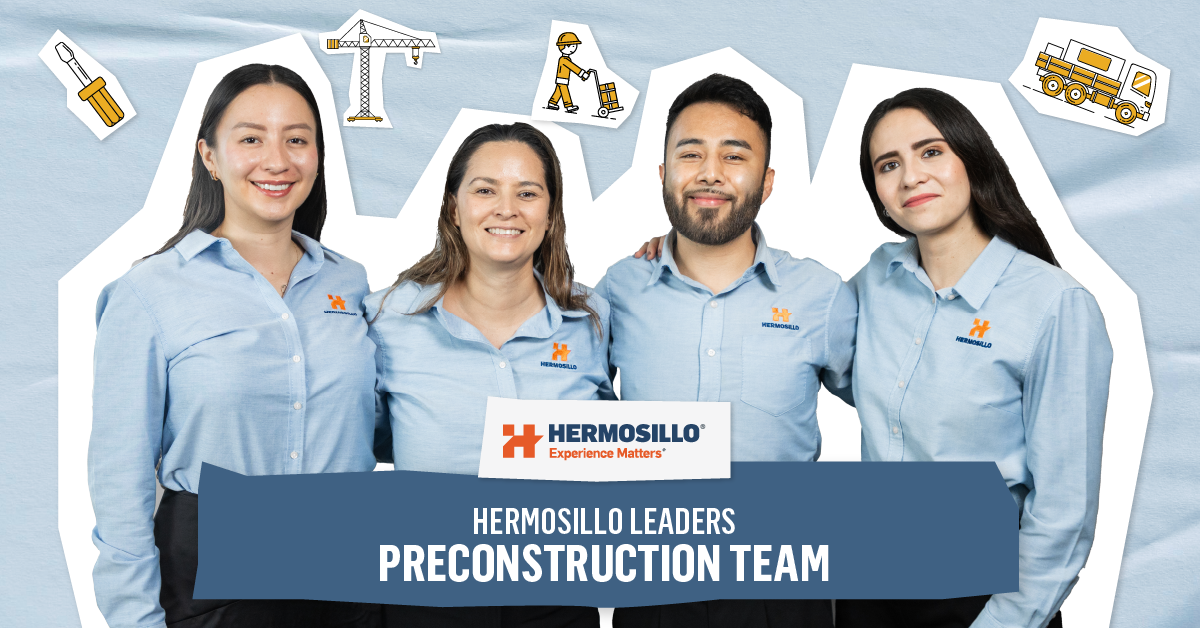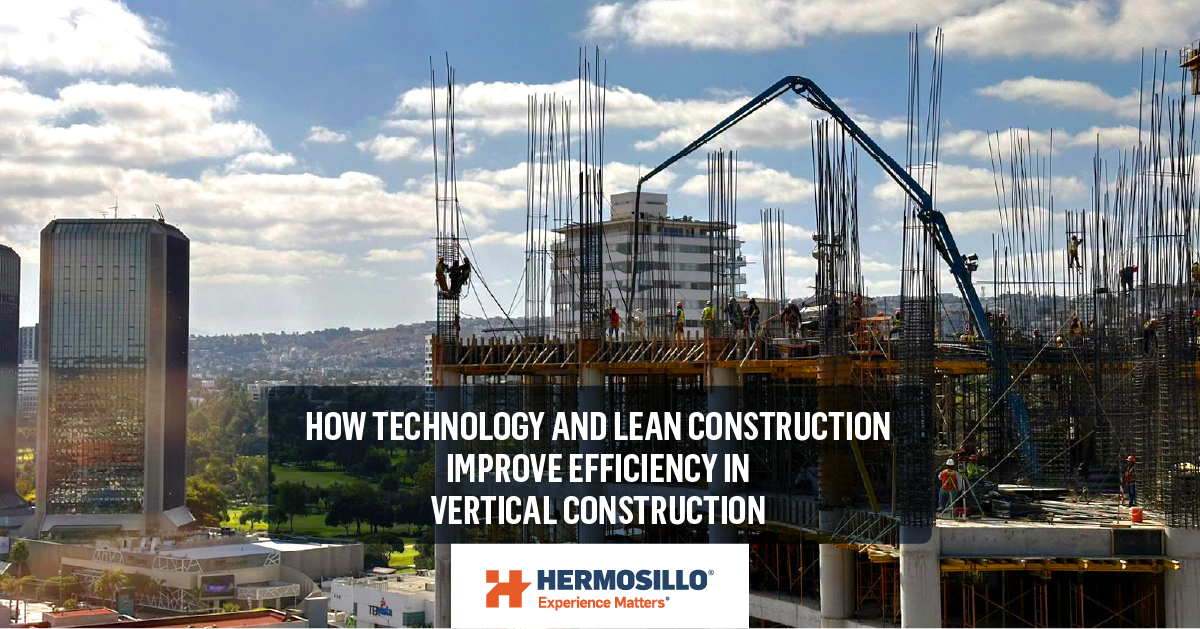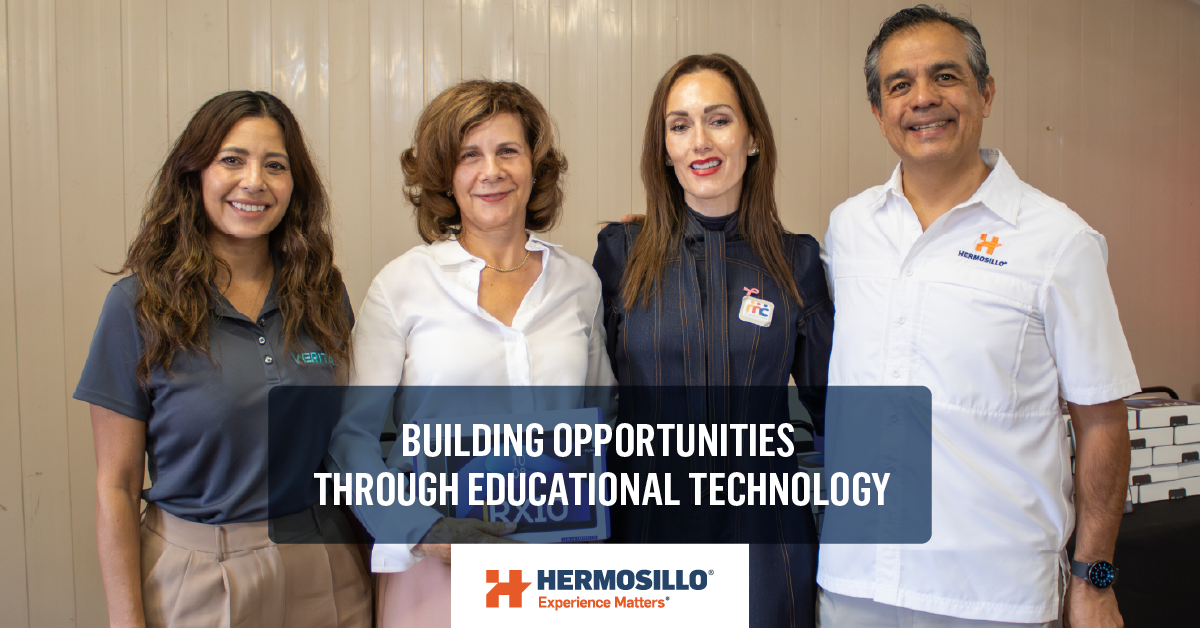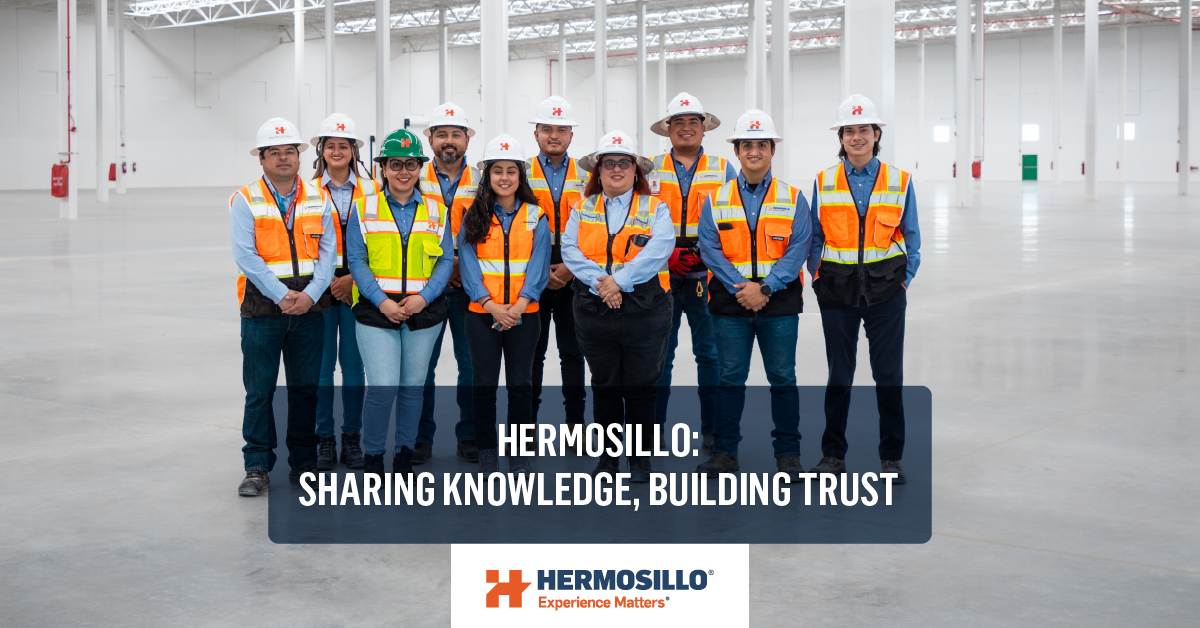
At Hermosillo, preconstruction is more than just a preliminary phase—it’s the strategic starting point that defines the success of every project. From planning and analysis to coordination and decision-making, our Preconstruction team transforms ideas into viable, efficient solutions tailored to each client’s needs.
In this interview, the team’s leaders share their vision, challenges, and the lasting impact they make from day one.
1. What is the role of the preconstruction team in the success of a project from its earliest stages?
Paulina: Our department’s role is to provide solutions for all types of projects, regardless of the client or the location within the country. We’re involved from the moment a building is just a concept, sometimes just an idea on paper.
Success at this stage lies in transforming that idea into tangible elements such as a 3D model, a budget, a set of plans, schematics, a construction schedule, and a solid logistics strategy. Our goal is to bring visions to life, laying the groundwork for efficient and well-planned execution.
Miriam: We turn our clients’ ideas and needs into real projects by combining innovative design, competitive proposals, and efficient construction logistics. All of this without compromising the quality, timelines, or costs that define us. For us, the client is always the most essential part of every project and comes first.
Brandon: Having the preconstruction team involved from the earliest stages is essential to a project’s success. It allows us to determine the best possible time and cost alternatives through proper planning and timely risk management.
Diana: The preconstruction team sets the foundation and guidelines for the project. We play a key role by defining the scope and construction methodology that must be followed to meet the delivery deadline comprehensively.
2. What challenges do you face during the preconstruction phase, and how do you overcome them as a team?
Paulina: One of the main challenges is understanding the client’s needs and finding the most efficient way to address them in terms of cost, time, and quality. Sometimes, clients don’t have complete clarity on what they require, and other times, even with a well-defined vision, they’re looking for something more innovative and with better features.
Undoubtedly, a team thinks better than any individual. The preconstruction department is made up of professionals who always have something valuable to contribute. Teamwork is what sets each of our proposals apart.
Miriam: The biggest challenge is understanding the client. Each project is unique and must be approached in a personalized way. Throughout the process, new ideas emerge that help us find the best solution.
Another ongoing challenge is that clients are increasingly seeking highly specialized solutions. That’s why we analyze each project in depth and work closely with the client to deliver it on time and as expected.
Brandon: Challenges begin as early as the bidding stage. The most common ones involve clearly defining the scope, understanding the client’s needs, and overcoming construction limitations.
Still, the most critical challenges always revolve around two key factors: time and cost. Overcoming them requires standardized processes and a shared vision focused on achieving the same goal.
Diana: One of the biggest challenges is team coordination and organizing all the necessary information in a very short time frame—typically between two and four weeks to plan and present a proposal.
Over time, we’ve implemented strategies that help us work more efficiently: structured reviews, cross-team collaboration, and the use of tech tools such as checklists, standardized delivery formats, and 4D simulations, among others.
3. How do you ensure that all parties involved start the project aligned in the same direction?
Paulina: We achieve this through effective coordination and communication. In Preconstruction, the approach is always collaborative: at least four interdisciplinary teams contribute from their area of expertise to solve the project. The key is integrating these perspectives to deliver a functional, coordinated, and feasible solution that aligns with the client’s needs.
Our workflow is centered around the BIM methodology, which acts as a common link between all teams. At this stage, the development of the 3D model becomes the connection point that brings together all aspects of the project.
Miriam: From the beginning of each project, we establish clear coordination and maintain constant communication. Each team lead is responsible for aligning their group, while we all work together to ensure we’re moving in the same direction.
Brandon: Having everyone in “harmony” is essential to meeting expectations. We hold kickoff meetings, keep communication channels open, and share the needs of each area—along with any constraints and delivery timelines. We also replicate successful case studies and foster motivation, which are key elements in ensuring alignment from the very beginning.
Diana: Our development process includes several collaborative milestones. One of them is the Kickoff Meeting, where the Development team communicates the project’s general objectives—such as delivery dates, overall scope, and preliminary strategies—to the Budgeting and Design teams. This ensures that all areas start the project with a clear and unified vision.
4. How do you apply your commitment to quality and responsibility in each planning process you develop?
Paulina: Our commitment is reflected in our constant pursuit of continuous improvement. We learn from every project we execute, listen to feedback from on-site teams, and consistently explore new suppliers, products, and systems. All of this allows us to offer stronger and more innovative proposals that meet the client’s needs with quality and responsibility.
Miriam: Quality and responsibility are present at every stage of our planning process. We design customized strategies, take care of every detail, and constantly verify that everything is aligned with the client’s expectations. This enables us to guarantee efficient and reliable results.
Brandon: Our commitment is clear: do it right the first time. From accurate estimations and realistic scheduling to thorough site analysis and proper resource selection, every decision is made to ensure a smooth, surprise-free execution. Feedback and lessons learned are also key to reinforcing this commitment with each new project.
Diana: After every project delivery, we hold a lessons-learned meeting where we identify areas for improvement and highlight what was done well. These best practices shape our minimum quality standards, which are shared with the entire team and used as a reference for future projects. We also constantly seek tools that help reinforce this mindset among all our collaborators.
5. What impact does a well-executed preconstruction phase have on the final project’s timeline, cost, and quality?
Paulina: A properly developed preconstruction phase allows us to make decisions early on, clearly understand the client’s needs, and anticipate potential risks from the very beginning of the project. This early preparation has a direct impact on controlling timelines, costs, and overall quality.
Miriam: When preconstruction is carried out correctly, it’s possible to anticipate risks, optimize resources, and make strategic decisions from the start. This leads to better control of deadlines, a significant reduction in costs, and a notable improvement in the final quality of the project.
Brandon: The team’s ability to anticipate, coordinate, and solve problems determines whether a project will unfold in harmony or chaos. A well-executed preconstruction phase is like having a detailed map before starting a journey—it guides you with precision and helps you reach your destination successfully. Every hour invested in preconstruction pays off during execution and is reflected in the project’s outcome.






